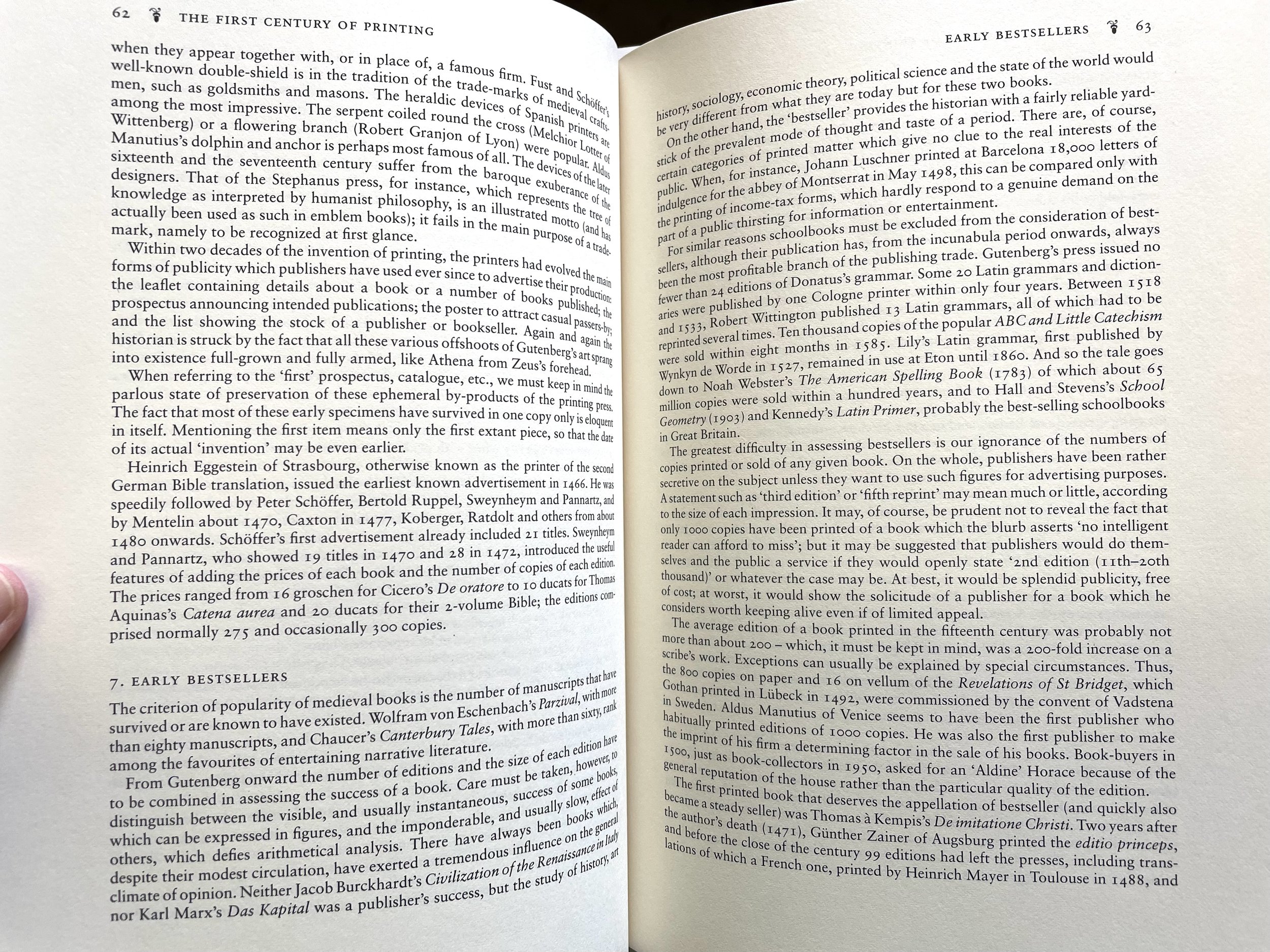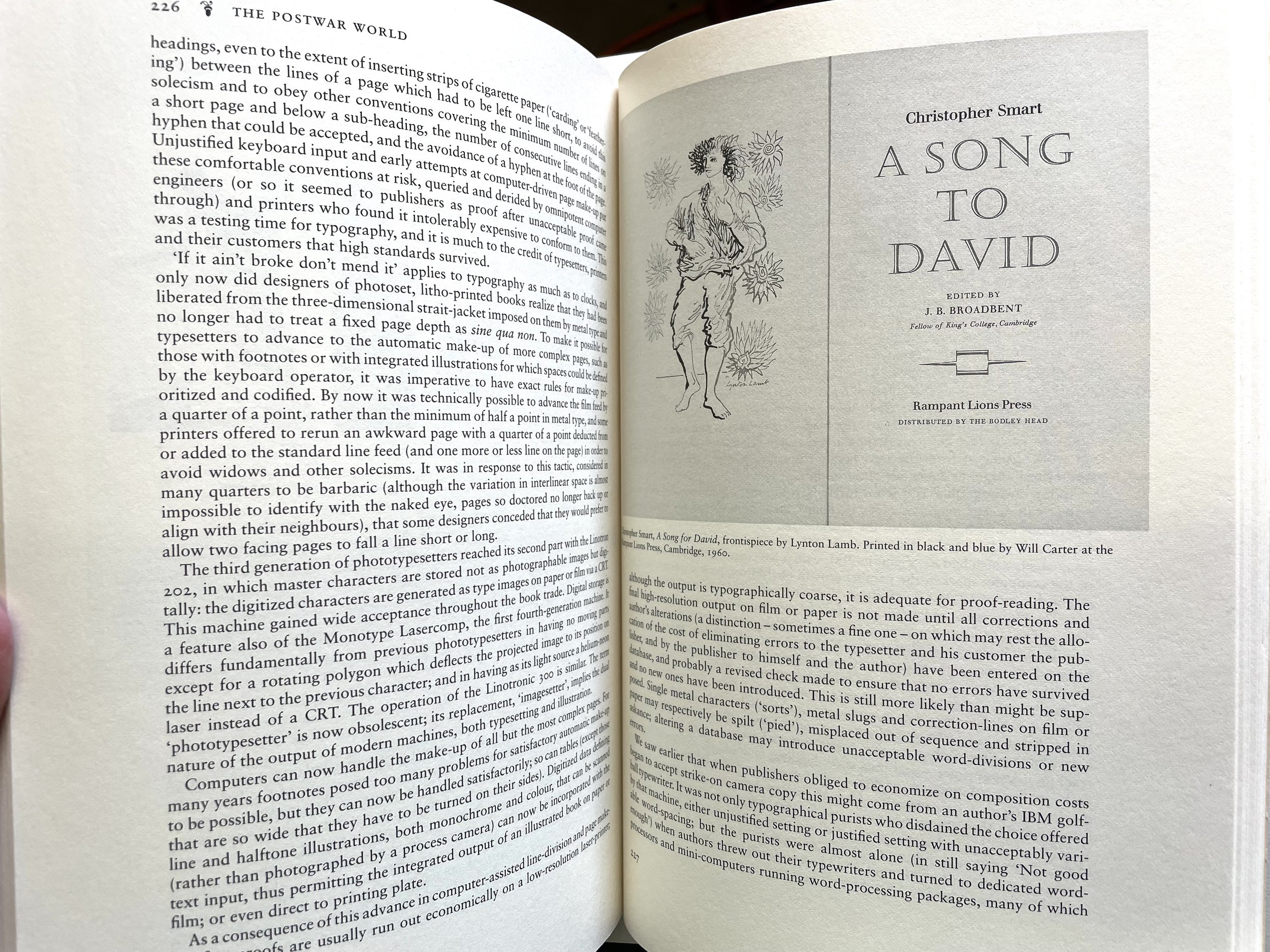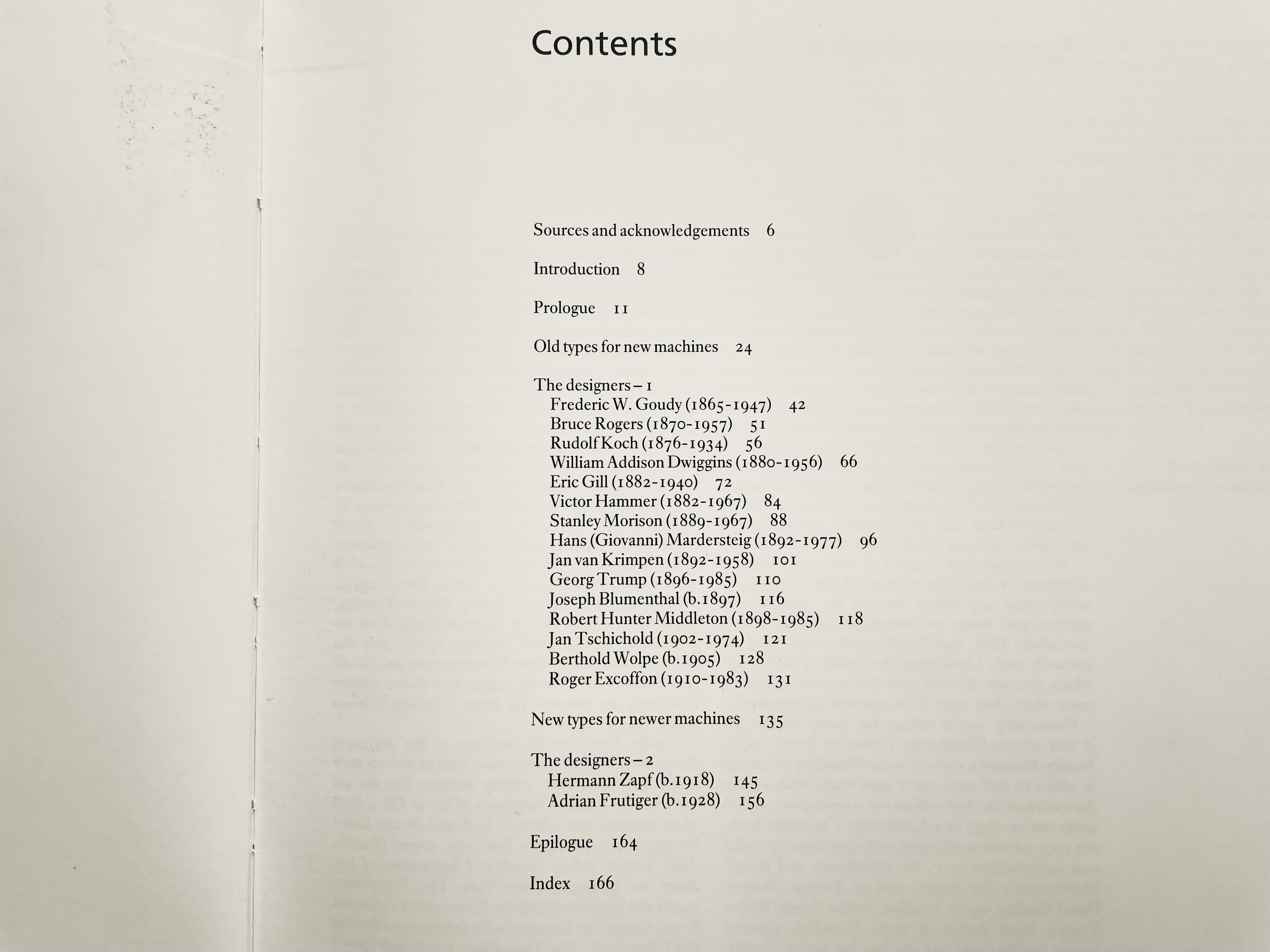Hello, Friends! Book Looks is BACK!
We began this series a couple of years ago, highlighting some of the interesting volumes here in the St Brigid Press library — from the history of book-making to printing press maintenance, from typography and type design to the biographies of famous (or not) printers, and from paper-making to hand-sewing books. We’ll take a brief look at three volumes today, and spotlight more over time. (If you missed the first Book Looks post, read it HERE, and the second Book Looks post HERE.)
Thanks for coming along as we browse the print shop shelves!
Emily Hancock
BOOK LOOKS, PART 3
Research for a new small letterpress project sent me to the library stacks this very week. I needed to brush back up on the history of type design and printing in northern Italy during the Renaissance period. A niche subject? Yeah. And fascinating! I pulled down a few volumes, books I hadn’t looked at in a while — it felt like catching up with old friends. If you’re into type and printing history, here are some books that just might interest you, too.
Historical Types: From Gutenberg to Ashendene by Stan Knight
As calligrapher and type designer Paul Shaw writes, “Historical Types is a modest book in scale and appearance that deceptively hides a wealth of information…” In under 100 pages, Knight provides an illustrated survey of the high points of type design from the 1450s to the first years of the 1900s — from Nicolas Jenson and Aldus Manutius working in Venice during the period I was studying, through the French Renaissance and Baroque, Neoclassical and Rational, 19th century and Private Press types that followed. Not one to to be wordy, Knight’s descriptions of each type, designer, and accompanying printed examples are short and tight, packing a good bit of info in just over half a page. The real treasure, especially for comparative study, are the large photo reproductions, taking up three-fourths of each two-page spread — we get up close and personal with each typeface, at its original size as well as enlarged, doing its job on a period manuscript page. Whenever you can get to a special collections and see such early printed books in front of your very eyes, then go. When you can’t, pull Historical Types off the shelf and spend some enjoyable time pouring over this handy home reference of foundational styles of type. (Oak Knoll Press, 2012)



2. Five Hundred Years of Printing by S.H. Steinberg (revised by John Trevitt)
If you want a broader education in the history of Western printing, from Gutenberg to post-WWII, then settle in with this volume’s 250 pages of densely packed information. Originally published in 1955, the revised edition has been expanded and updated, including dozens of illustrations of manuscript pages through the ages. In addition to deft histories of printing and publishing technologies, Steinberg and Trevitt are interested in the economic and sociological aspects of the industry as well. They highlight and explore some of the cultural dimensions of book making, from the phenomena of bestsellers and censorship to the role of patrons and libraries. The authors also consider who “the reading public” is at any given time, noting the state of education, literacy, and book- and periodical-selling through the centuries. (Oak Knoll Press, 1996)



3. Twentieth Century Type Designers by Sebastian Carter
Ok, out of the dusty distant past and into the (relatively recent) present. In this volume, the book designer and printer Sebastian Carter profiles some of the best European and American type designers working from the early 20th century until this book was published in 1987. Frederic Goudy and William Addison Dwiggins are here, as well as Rudolf Koch, Victor Hammer, Jan van Krimpen, Joseph Blumenthal and many more — all of them men, of course, though there is one page devoted to Gudrun Zapf-von Hesse. (You can begin exploring women type designers here and here.) At a few well-illustrated pages per entry, Carter gives us a relatively brief but informative survey of each designer, their history and influences, and a feel for what makes their design(s) unique. I find myself pulling this book off the shelf at regular intervals, while taking a break in the print shop, to dip into the interesting personalities and creativities highlighted herein. (Taplinger Publishing, 1987)




Well, that’s all for now, friends, as I gotta get back to setting some type ;-) Stay tuned for future installments of Book Looks, and in the meantime, be well and read on!
Emily




